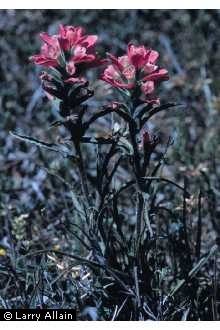

The blossom might be edible raw, I just haven’t tired them. The blossoms should be cooked though usually one never sees the plant until the late fall and winter when one can see the fruit from the seasonal die back. However, their blossoms are edible if they are not bitter and you remove the pistils. They used to be cultivated for to make preserves and I have a separate article on them. The short answer is they are Citron Melons. The two plants non-foraging people ask about all the time are Society Garlic (covered elsewhere) and those small watermelon like fruit seen in old citrus groves and abandoned fields. A tea can be made from the leaves and the wood used to smoke meat. It can also be used to make brich beer and vinegar. The sap makes a drink, a syrup or a sugar, depending upon how long you heat it up. Very young leaves, shoots and catkins can be eaten in salads or stirfried. While most birches have edible parts we are interested in this article in the Paper Birch, Betula papyrifera. What you also might not know is that an epoxy-like tar can be extracted from birchwood. And of course there were the famous birch bark canoes. The twigs and catkins have been used as a wintergreen-ish flavoring for as long as we have written records about North America. Birches were a common tree of my youth, white birch, golden birch and paper birch. Birches do not like Florida though they can be planted in the norther bounds of the state. Many plants need cooler weather to reproduce or fruit or just thrive. There are several advantages to living where it never snows, and a few disadvantages. Don’t confuse the blossom with Poison Hemlock or you will be seeing angels not angelica. Celery-ish may its green parts be the blossoms, however, have a light anise flavor. North American Indians, however, smoked the leaves for medicinal purposes. The first two for flavoring - such as in Chartreuse - and second pair as cooked greens, particularly in the Izu Islands of Japan where there are a favored addition to springtime tempura. Angelica has long been valued for its seeds, stems, leaves and shoots. It’s difficult to imagine a kitchen or herbal medicine cabinet without Angelica around someplace. Leaves, young stems, and flowers are used for flavoring in salads or any dish where pungency is desired. Maritima refers to its habitat, meaning it likes to grow near the seashore and is somewhat salt tolerant. A native of the Mediterranean areas it has traveled far and is found 41 states most of Canada.The genus name lobularia comes from dead Latin and means small globe, referring to the shape of the flower cluster. They were Allyssum lobularia and now they are Lobularia maritima. Mat-forming Alyssums recently underwent a genus and species name change. Onion stems are round, as are chives but smaller. Blossoms are usually white but can also be pink. Usually the flowers have a stronger flavor than the leafy parts, and the developing seed head even stronger flavor. At any rate there are some 400 species if you include onions, garlic, chives, shallots, and closely related ramps/leeks, the latter having wide leaves. And if I remember correctly, an onion always has a singular bulb per plant where as the garlic as sectioned cloves. Locally the “wild onions” (read really garlics) grow their cloves on the top of the plant, not underground. Look and aroma, like horse and carriage and love and marriage. We have a lily here in Florida, for example, that looks like an onion but no aroma, and raw it can be deadly. They must have both, however, look and aroma. If it looks like an onion and smells like an onion you can eat it. The author of “Florida’s Incredible Wild Edibles” Dick Deuerling, now in his 90s, taught me several decades ago that: If it looks like a garlic and smells like a garlic it is a garlic and you can eat it.


 0 kommentar(er)
0 kommentar(er)
